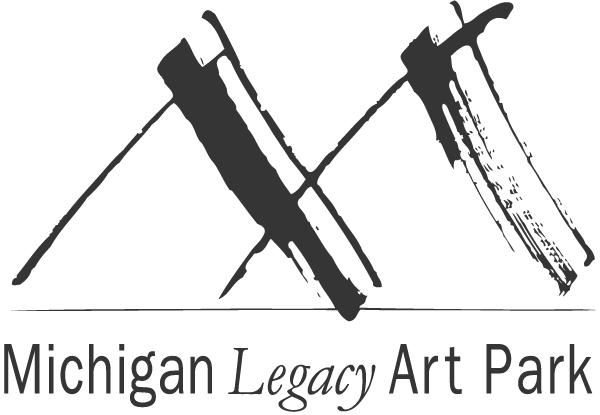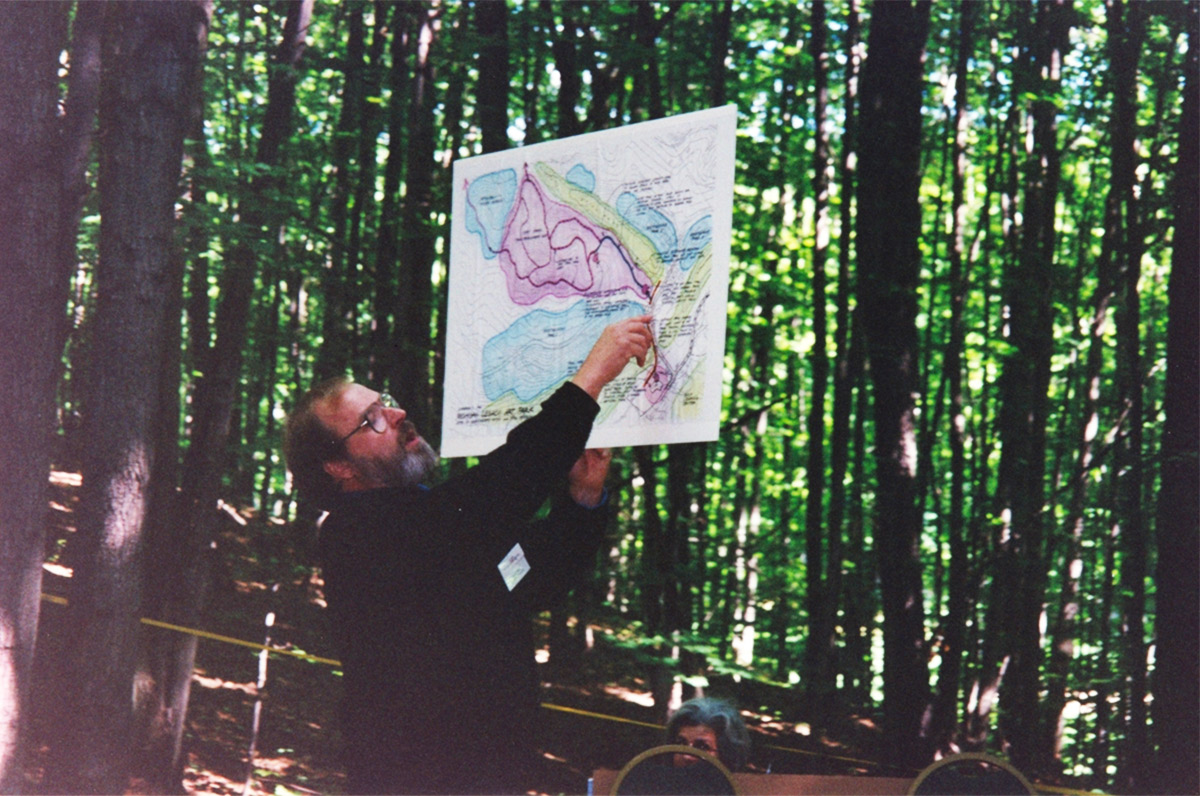About

Who We Are
Michigan Legacy Art Park is non-profit contemporary sculpture park located on two miles of hiking trails amidst a 30-acre hardwood forest preserve in Benzie County.
Our mission is to inspire awareness, appreciation and passion for Michigan’s history, culture and environment through the arts.
Plan Your VisitMission

The Organization
Founded by internationally acclaimed artist David Barr in 1995, the Art Park is a natural extension and reflection of his work and global influence. Barr was awarded the Governor’s Michigan Artist Award in 1988. In his acceptance speech, he told the audience of his desire to create a Michigan Art Park—a place where artists could tell the story of our state in and through the fundamental materials of nature. In his assessment of our state at that time, there was something missing – a place that expresses Michigan’s history through the arts. Illustrations or artifacts of that history already existed, but he wanted contemporary artists to bring that history to fresh and vivid life.
Michigan Legacy Art Park is non-profit organization located on a 30-acre preserve of wooded hills in Benzie County. The land is generously leased from Crystal Mountain for $1 per year. The partnership between Crystal Mountain and Michigan Legacy Art Park has been from its inception one of a shared vision. This relationship is based on a unique model of appropriately shared land, facilities and staff support. Because of this sustainable model, the Art Park uses its resources efficiently and garners the support of individuals, foundations and corporations to provide mission-driven activities.
Purchase David Barr’s book about the history of Michigan Legacy Art Park on Amazon.
Education
While Michigan’s schools are being asked to do more with less, Michigan Legacy Art Park helps educators fill the gap by offering valuable learning opportunities. The sculptures serve as inspirational starting points for topics in history, geography, science, language arts, and environmental studies. Each fall and spring, teachers from area schools bring their students on field trips to the Art Park—a place where their textbooks spring to life through the sculptures they discover while exploring nature.



